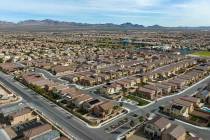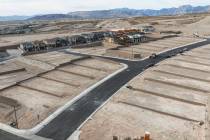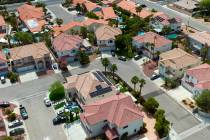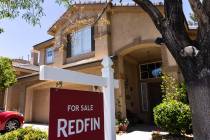Q&A: Administration’s new mortgage-refinance plan
Q: What is the program?
A. The Home Affordable Refinance Program, HARP, was started in 2009. It allows homeowners to refinance their mortgages at lower rates. Borrowers can bypass the usual requirement of having at least 20 percent equity in their home. But few people have signed up. Many "underwater" borrowers, those who owe more than their homes are worth, couldn’t qualify under the program. Roughly 22.5 percent of U.S. homeowners, about 11 million, are underwater, according to CoreLogic, a real estate data firm. As of Aug. 31, fewer than 900,000 homeowners, and just 72,000 underwater homeowners, had refinanced through the administration’s program. The administration had estimated that the program would help 4 million to 5 million homeowners.
Q. Why did so few benefit?
A. Mainly because those who had lost the most in their homes were not eligible. Participation was limited to those whose home values were no more than 25 percent below what they owed their lender. That excluded roughly 10 percent of borrowers, according to CoreLogic. In some hard-hit areas, borrowers have lost nearly 50 percent of their homes’ value. Another problem: Homeowners must pay thousands in closing costs and appraisal fees to refinance. Typically, that adds up to 1 percent of the loan’s value . Sinking home prices also left many fearful that prices had yet to hit bottom. Or their credit scores were too low.
Q: What changes is the administration making?
A. Homeowners’ eligibility won’t be affected by how far their home’s value has fallen. And some fees for closing, title insurance and lien processing will be eliminated. So refinancing will be cheaper. The number of homeowners who need an appraisal will be reduced, saving more money. Banks won’t have to buy back the mortgages from Fannie Mae or Freddie Mac, as they previously had to when dealing with some risky loans. That change will free many lenders to offer refinance loans. The program will be extended 18 months, through 2013.
Q: Who’s eligible?
A. Those whose loans are owned or backed by Fannie Mae or Freddie Mac, which the government took control of three years ago. Fannie and Freddie own or guarantee about half of all U.S. mortgages, nearly 31 million loans. To qualify for refinancing, a loan must have been sold to Fannie and Freddie before June 2009. Homeowners can determine whether their mortgage is owned by Fannie or Freddie by going online: Freddie’s loan tool is at freddiemac.com/mymortgage; Fannie’s is at fanniemae.com/loanlookup. Mortgages that were refinanced during the past 2½ years aren’t eligible. Homeowners must be current on their mortgage. One late payment within six months, or more than one in the past year, would mean disqualification. Perhaps the biggest limitation on the program: It’s voluntary for lenders. Banks can reject refinancing even if a homeowner meets all requirements.
Q: Will it work?
A. For those who can qualify, the savings could be significant. If, for example, a homeowner with a $200,000 mortgage at 6 percent can refinance down to 4.5 percent, the savings would be $3,000 a year. But the benefit to the economy probably will be limited. Even homeowners who are eligible and who choose to refinance through the government program could opt to sock away their savings or pay down debt rather than spend it.
Q: Who will benefit most?
A: Underwater homeowners in the hard-hit states of Arizona, California, Florida and Nevada could be greatly helped. Many are stuck with high mortgage rates after they were approved for mortgages with little or no money as a down payment and few requirements. The average yearly savings for a household would be $2,500, officials say.
Q: When will it start?
A: Fannie and Freddie will issue the full details of the plan lenders and servicers on Nov. 15, officials say. The revamped program could be in place for some lenders as early as Dec. 1.
THE ASSOCIATED PRESS


















